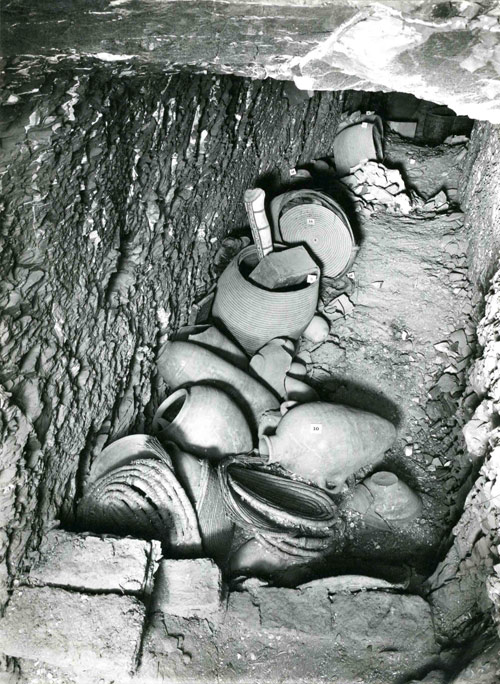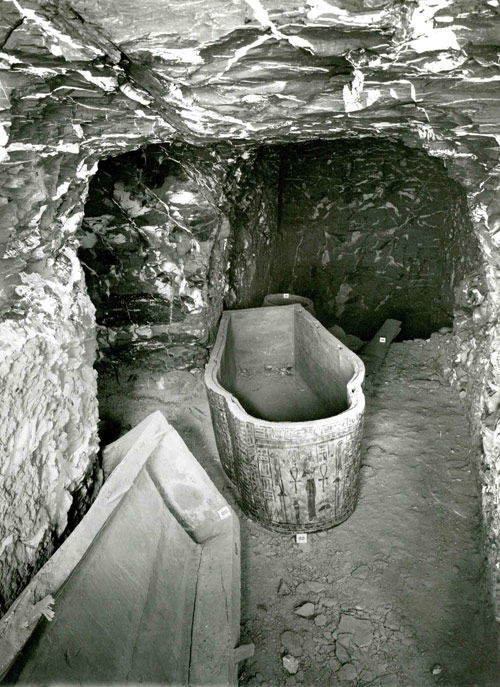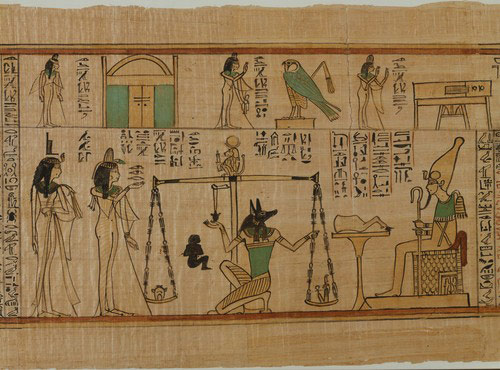 Traveling Exhibitions
Traveling Exhibitions Traveling Works of Art
Traveling Works of Art Conservation Projects
Conservation Projects Excavations
Excavations Fellows
Fellows Exchanges & Collaborations
Exchanges & Collaborations Multiple Items
Multiple Items
The Met Around the World presents the Met’s work via the global scope of its collection and as it extends across the nation and the world through a variety of domestic and international initiatives and programs, including exhibitions, excavations, fellowships, professional exchanges, conservation projects, and traveling works of art.
The Met Around the World is designed and maintained by the Office of the Director.
Traveling
Exhibitions
The Met organizes large and small exhibitions that travel beyond the Museum's walls, extending our scholarship to institutions across the world. See our national and international traveling exhibition program from 2009 to the present.
Traveling
Works of Art
The Met lends works of art to exhibitions and institutions worldwide to expose its collection to the broadest possible audience. See our current national and international loans program.
Conservation
Projects
The preservation of works of art is a fundamental part of the Met's mission. Our work in this area includes treating works of art from other collections. See our national and international conservation activities from 2009 to the present.
Excavations
The Met has conducted excavations for over 100 years in direct partnership with source countries at some of the most important archaeological sites in the world. Today we continue this tradition in order to gain greater understanding of our ancient collections. See our national and international excavation program from the Met's founding to the present.
Fellows
The Met hosts students, scholars, and museum professionals so that they can learn from our staff and pursue independent research in the context of the Met's exceptional resources and facilities. See the activities of our current national and international fellows.
Exchanges & Collaborations
The Met's work takes many forms, from participation in exchange programs at partnering institutions and worldwide symposia to advising on a range of museum issues. These activities contribute to our commitment to advancing the work of the larger, global community of art museums. See our national and international exchange program and other collaborations from 2009 to the present.
 First corridor of the tomb of Merytamun (M10C 99). Photograph by Harry Burton, 1929. Archives of the Egyptian Expedition, Department of Egyptian Art.
First corridor of the tomb of Merytamun (M10C 99). Photograph by Harry Burton, 1929. Archives of the Egyptian Expedition, Department of Egyptian Art. Nany's coffin in the second corridor (M10C 103). Photograph by Harry Burton, 1929. Archives of the Egyptian Expedition, Department of Egyptian Art.
Nany's coffin in the second corridor (M10C 103). Photograph by Harry Burton, 1929. Archives of the Egyptian Expedition, Department of Egyptian Art.
The Singer of Amun Nany's Funerary Papyrus
Third Intermediate Period, Dynasty 21, reign of Psusennes I, ca. 1040–992 B.C.
Egypt, Upper Egypt; Thebes, Deir el-Bahri, Tomb of Meritamun (TT 358, MMA 65), first corridor, inside Osiris figure, MMA 1928–1929
Rogers Fund, 1930 (30.3.31)

 Merytamun's burial in her tomb (TT 65, M10C 107). Photograph by Harry Burton, 1929. Archives of the Egyptian Expedition, Department of Egyptian Art.
Merytamun's burial in her tomb (TT 65, M10C 107). Photograph by Harry Burton, 1929. Archives of the Egyptian Expedition, Department of Egyptian Art. Merytamun's outer coffin (Cairo, JE53140, M10C 115). Photograph by Harry Burton, 1929. Archives of the Egyptian Expedition, Department of Egyptian Art.
Merytamun's outer coffin (Cairo, JE53140, M10C 115). Photograph by Harry Burton, 1929. Archives of the Egyptian Expedition, Department of Egyptian Art.
Egypt
1929, 1930
In February 1929, while clearing the hillside north of Hatshesput's temple, the Museum's excavators came upon a roughly cut pit. Mudbrick blocking indicated the entrance to a tomb and when the bricks were removed, Museum Egyptologist Herbert E. Winlock and his colleagues saw a long corridor with a jumble of baskets, boxes, and pottery along one side. The tomb had clearly been used more than once, as these objects came from two distinct periods: the baskets were early New Kingdom (ca. 1500 B.C.); the boxes were from five centuries later in the early Third Intermediate Period (ca. 1000 B.C.).
At the end of the corridor, where the tomb took a sharp turn to the right, lay a coffin containing an undisturbed mummy. The coffin's lid and a larger, outer coffin, lay farther inside the tomb at the edge of a deep well-like shaft. The coffins were inscribed for Nany, a daughter of the High Priest of Amun and titular king Painedjem I of Dynasty 21. The gold elements on Nany's coffins had been removed, but her burial was largely intact and included a magnificent Book of the Dead papyrus. The papyrus and other objects received in the division of finds are on view in Egyptian gallery 126.
The Burial of Queen Merytamun
After Nany's burial, equipment was removed and boards were used to span the well. Beyond were two undecorated rooms, the second of which held a huge, beautifully carved, anthropoid (human-shaped) coffin inscribed for Queen Merytamun, who was probably the principal wife and sister of Amenhotep I of early Dynasty 18. Inside was a second, much smaller coffin that held the beautifully wrapped mummy of the queen. An inscription on the outer shroud stated that her burial had been "examined" on a specific date in year 19 of an unnamed king. Winlock eventually identified this king as Painedjem I (Nany's father), who ruled some 500 years after Merytamun's death.
Investigation of the mummy revealed what the ancient "examination" had entailed: careful unwrapping; removal of the gold jewelry (which left impressions on the inner wrappings); and rewrapping with new linen. This apparently official (and respectful) recycling of material wealth was very different from the more destructive acts of tomb robbers and shed an interesting light on the actions of Dynasty 21 officials.
The location of Merytamun's tomb was undoubtedly remembered when Painedjem's daughter, Nany, died in her late seventies. Tomb reuse occurred frequently in western Thebes, where the cemeteries and temples were in use for several thousand years.
The majority of objects from Merytamun's royal burial were retained by the Egyptian Antiquities Service in the division of finds, but several baskets and an interesting human-shaped shroud came to the Museum and are on display in Egyptian gallery 116.

